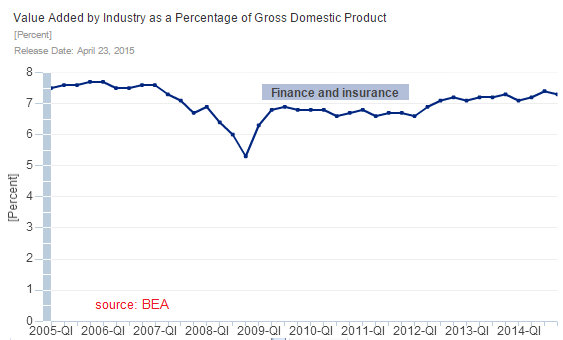By Steven Hansen.

Summary
- Dodd-Frank is touted as the protector of the economy from failures of the Too Big To Fail (TBTF) banks.
- Arrogance and ignorance makes one believe there is a defense possible to prevent damaging failures.
- The way Dodd-Frank is being implemented, it is perpetuating the TBTF banks..
I am in the middle of the Atlantic on a cruise ship headed to Europe. Having spent 15 years of my life on the high seas and attending shipowners’ conferences, I always take a critical look at cruise ships. Since the birth of this industry almost 50 years ago, the number of passengers on each cruise ship has grown from a few hundred to many thousands.
The ships now are too large to fail. There is not a chance that all passengers can be evacuated in the event of a catastrophic event – so the design of the ships have evolved to both preventing and fighting any foreseen event to minimize the effect to the ship and the passengers. Notice my use of the word “foreseen” as:
- It is impossible to foresee all possible events;
- It is impossible to foresee and anticipate the chain of events (failure tree) – many / most failures result from a cascade of events which were not anticipated to occur simultaneously or in a failure mode progression.
Consider now the words of Federal Reserve Chair Yellen in a recent speechtalking about the Too Big To Fail (TBTF) banks;
In the aftermath of the crisis, the Congress tasked the banking regulators with challenging and changing the perception that any financial institution is too big to fail by ensuring that even very large banking organizations can be resolved without harming financial stability. Steps are under way to achieve this objective. In particular, banking organizations are required to prepare “living wills”–plans for their rapid and orderly resolution in the event of insolvency. Regulators are considering requiring that bank holding companies have sufficient total loss-absorbing capacity, including long-term debt, to enable them to be wound down without government support. In addition, the Federal Deposit Insurance Corporation has designed a strategy that it could deploy (known as Single Point of Entry) to resolve a systemically important institution in an orderly manner.
The crisis also revealed that risk management at large, complex financial institutions was insufficient to handle the risks that some firms had taken. Compensation systems all too frequently failed to appropriately account for longer-term risks undertaken by employees. And lax controls in some cases contributed to unethical and illegal behavior by banking organizations and their employees. The Federal Reserve has made improving risk management and internal controls a top priority. For example, the Comprehensive Capital Analysis and Review, which includes the stress tests that I mentioned, also involves an evaluation to ensure firms have a sound process in place for measuring and monitoring the risks they are taking and for matching their capital levels to those risks. Also, supervisors from the Fed and other agencies have pressed firms to improve their internal controls and to make their boards of directors more directly responsible for compensation decisions and employee conduct.
Arrogance and ignorance makes one believe there is a defense possible to prevent damaging failures.
The bold sentence (in the quoted paragraph above) is a discussion of the Single Point of Entry plan of the FDIC where the FDIC in simple terms takes over the bank in a “bankruptcy process” involving either liquidation or emergence from bankruptcy. Most of the logic of this process is the creation of a good company and bad company (where the bad company dies). In effect, the good failed bank likely will remain in existence propagating the too big to fail good bank until the next failure.

Financial institutions are 7% of the economy, and there are 29 TBTF financial institutions. My operational understanding of the Dodd-Frank Act is that it actually propagates the TBTF banks ad infinitum by appending safety features to a system which really is designed to protect the status quo. Let me say again:
- It is impossible to foresee all possible events;
- It is impossible to foresee and anticipate the chain of events (failure tree) – many / most failures result from a cascade of events which were not anticipated to occur simultaneously or in a failure mode progression.
From an organizational design standpoint – big usually is more efficient than little. But the downside is that there is no free market process for banks. Once they become big, they get to remain big forever. Steven Hansen cannot go down and start a bank – the system prevents it – even if Steven Hansen is a good guy and has the finances. Banking has become a good ole boy’s network where the existing players are playing on protected turf.
Usually I have had few words of support for Professor Paul Krugman’s Op-ed’s. However he hit the nail on the head this week saying:
Does this mean that all is well on the financial front? Of course not. Dodd-Frank is much better than nothing, but far from being all we need. And the vampires are still lurking in their coffins, waiting to strike again. But things could be worse.
My weekly economic recap is in my instablog.


